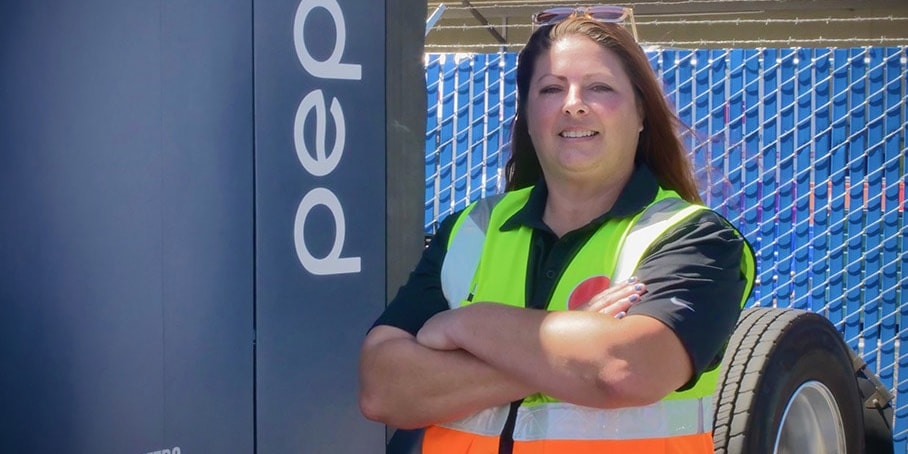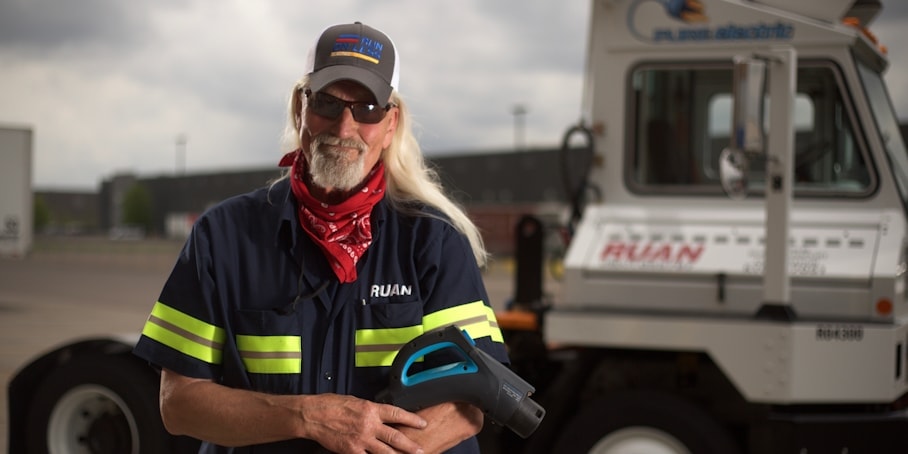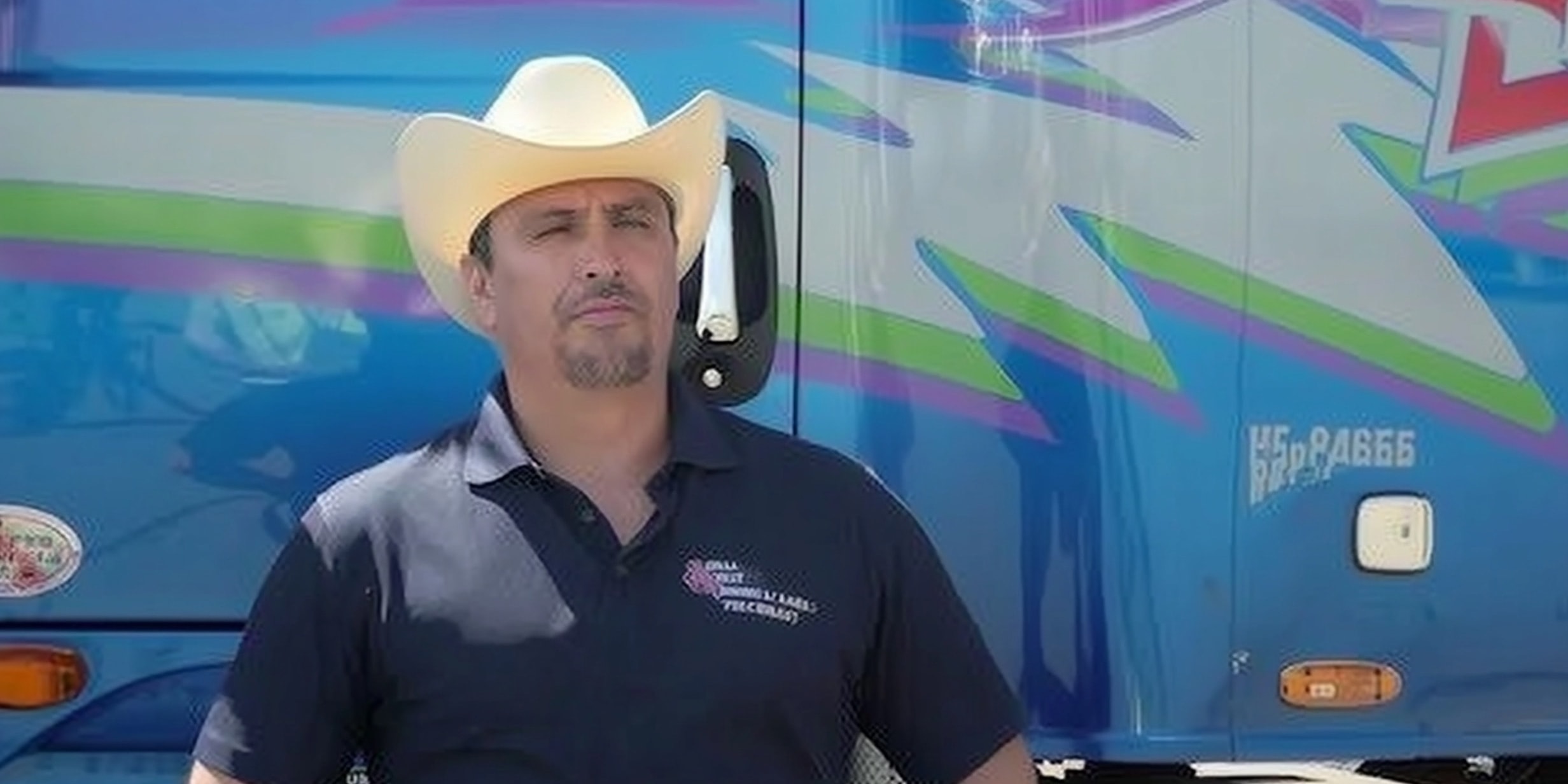Overcoming the Cost Challenge
The cost of both the truck and the infrastructure can cause some fleets to hesitate to add battery electric vehicles. But there are ways to mitigate those costs.
NACFE staff interviewed 122 people leading up to Run on Less – Electric DEPOT. We wanted to present a balanced real-world view of what it takes to move from having one or two battery electric trucks in a fleet to having 15 or more. During each interview, we asked the interviewees to talk about the challenges they faced in trying to increase the number of electric vehicles at a depot. We had to dig a little to get them to share the challenges they faced, but many agreed to talk about the challenges and what they did to overcome them.

There is no denying that today the capital cost of battery electric trucks is more than their diesel counterparts, which is one of the challenges that is preventing some fleets from investing in them. In addition, fleets likely will have to make an investment in charging infrastructure.
Capital costs are not the only deciding factor. There are significant opportunities to reduce total cost of ownership through operating cost savings in fuel, maintenance and uptime. There are also funds available from grants, incentives and other subsidies. There are also unknowns such as residual value and just how long fleets will own their trucks.
Dean Magistrale, director of electric vehicle operations, Performance Team Logistics, reminds us that every new technology is more expensive than the previous technology and we know that as more fleets adopt a technology the costs tend to come down.
“Every everything needs to be ultimately economically feasible,” says Umar Javed, president and co-founder of WattEV. “You can’t just go build a site or buy a truck and just say, let’s go with it.’ Ultimately, shippers pay X amount of dollars per load and they’re not going to pay more.”
Duty Cycle and Utilization Matter
Many fleets have found that light- and medium-duty electric trucks are already penciling out with a positive return on investment. The initial purchase price of these vehicle is lower than their heavy-duty counterparts and the ability to charge them using existing depot power means their total cost of ownership is close to that of current diesel-powered light and medium-duty trucks.
However, at this point in their development, battery electric vehicles do not make sense in every application and using a BEV in the wrong application can be costly. Amanda DeVoe, transformation and strategy director, PepsiCo Fleet, says the fleet has a “pretty robust set of selection criteria which anchors itself in what is the range, what is the geography, what is the size and asset class of the vehicle, what is the availability and what is the charging solution?”
Charlotte Argue, senior manager, sustainable mobility, Geotab, suggests fleets “look at the existing diesel and gas vehicles in their routes and use telematics to understand really how those vehicles are being used today, how far are they going, what their duty cycle is when they’re coming back to the depot.”
This can help the fleet operator understand, without assumptions, exactly what they would need if those vehicles were to go to electric. She adds, “This will help them determine what kind of characteristics, what kind of battery and range they need. Using the telematics and duty cycle data, they can also understand when these vehicles are coming back to the depot and how long are they sitting there. And that can help inform what kind of charging infrastructure they will need.”
Incentives Help
The good news is that there currently are incentives available to help offset the increased purchase price of battery electric trucks. “Incentives are always important,” Bahram Javaheri, CEO, Charge America says. “In this industry they are very important because the general public and the industry are a little bit hesitant to get into something new.”
Incentives allow fleets to be a little more comfortable with their decision to purchase a battery electric truck and reduce their risks somewhat.
“Financially, we all know that electrification is an expensive endeavor,” says Vera Voronstova, CFO, OK Produce. “The support of various institutions, grants, rebates, incentive programs were extremely important to the decision [to add battery electric vehicles]. As much as we want to be the pioneer, everybody knows that electrification efforts are pretty expensive and therefore those incentives were critical to our ability to get to where we are today.”
Michael Gallagher, head of procurement, fleet services, Performance Team Logistics, says the fleet was “fortunate to take advantage of every subsidy opportunity that’s out there.”
“For companies that are looking to electrify their fleets, there are several funding contribution programs that are available in North America in Canada,” says Cindy Bailey, head of corporate sustainability, Purolator.
“There are programs at the federal level, provincial level and municipal level that can help fund both the infrastructure and the electric vehicles,” she said.
Incentives are not limited to the vehicles themselves. There also are programs to assist with the cost of the charging infrastructure. According to Terry Day, COO and co-founder, InCharge Energy, many utilities are developing programs specifically to assist with truck electrification. “The utility is funding some of the make-ready infrastructure through the Charge Ready transport program at Southern California Edison. We also have state funding.”
Joy Gardner, executive director, Empire Clean Cities, explains that there is a great deal of state funding available in places like New York and California. “Fleets need to take advantage of those incentives and resources.”
She adds, “We don’t know if they’ll be around forever. And so now is the time to strike while the iron is hot. The next couple of years are going to be really important for fleets to take advantage of the available funding. I’m really hoping to see continued investment at the city, state and federal level for providing incentives and opportunities for fleets.”
However, there can be challenges coordinating multiple funding sources, meeting the program requirements for each while trying to stay within the cost envelope a fleet is trying to achieve, Day says.
Navigating all the grants, incentives and other programs can be daunting. Gallagher says, “There’s funding out there, but you need a team that’s able to take advantage of it and put together a roadmap on how to get there.”
Alex Voets, general manager at Velocity Truck Centers, explains that especially for incentives on the infrastructure side, there is guidance available to help fleets with their electrification projects.
Tracey Craig, regional truck sales director for TEC Equipment, says the dealership has grant managers specifically focused on incentives who work with CARB, CalStart and other programs to help their fleet customers apply for funding.
Christopher Matheis, fleet account manager, Peach State Freightliner, says his dealership also offers grant support to fleets. “In a lot of cases, the dealership has to be intimately involved in a grant process. If the customer is planning to use grant funds to help subsidize a vehicle purchase, we can be intimately involved in that process as well.”
ROI Is Not All That Matters
For some fleets, return on investment is not the only measurement that matters. “ROI is absolutely part of the calculation, but it’s not the only factor that is considered in the process. We reviewed all the calculations, and we saw there is a risk factor involved,” Voronstova says. Collectively the fleet decided it was willing to take on the risk. “We believe in the end it’s going to work well, not only for produce but also for the stakeholders of the produce, including our customers.”
Other benefits of switching to battery electric vehicles can be difficult to quantify. For example, Gallagher says that at some ports “there’s a fast lane that you can use for zero emission. So, all of these electric trucks are able to get in and out of the port much quicker than their diesel counterparts. There were a lot of considerations for why we went electric, but that was certainly one of them.”
Ready Today
For some applications, battery electric vehicles are already making sense. Adam Buttgenbach, director of fleet engineering & sustainability, PepsiCo, explains, “We’ve seen in certain duty cycles and in certain asset classes that the economics already make sense from the fuel savings, from the maintenance savings, from the driver turnover and positive impact on our employees operating the vehicles. We see electric vehicles in certain asset classes making sense today without grants and initiatives.”
Javed says, “Price points need to make sense. Everything needs to work backward from what the price points are in the market per load or per container load or per distribution center loads.”
He adds, “When you know all that, you need to work backward and say, ‘okay, what is that infrastructure cost that I can live with,’ including subsidies or grants and everything else.”
Looking to the future, Samir Sheikh, executive director/air pollution control officer, San Joaquin Valley Air Control District, says, “If we can get the costs down over time as economies of scale improve and considering the life cycle cost and the emissions and air quality benefits of these types of projects, they really start penciling out over time.”
Battery electric trucks are making economic sense to a growing list of fleet customers in a variety of applications. The key is understanding your actual total cost of ownership for your current fleet and how that could change with the new technology. It will require a willingness to trade-off increased capital costs for lower operating costs over the ownership period of the vehicle.





